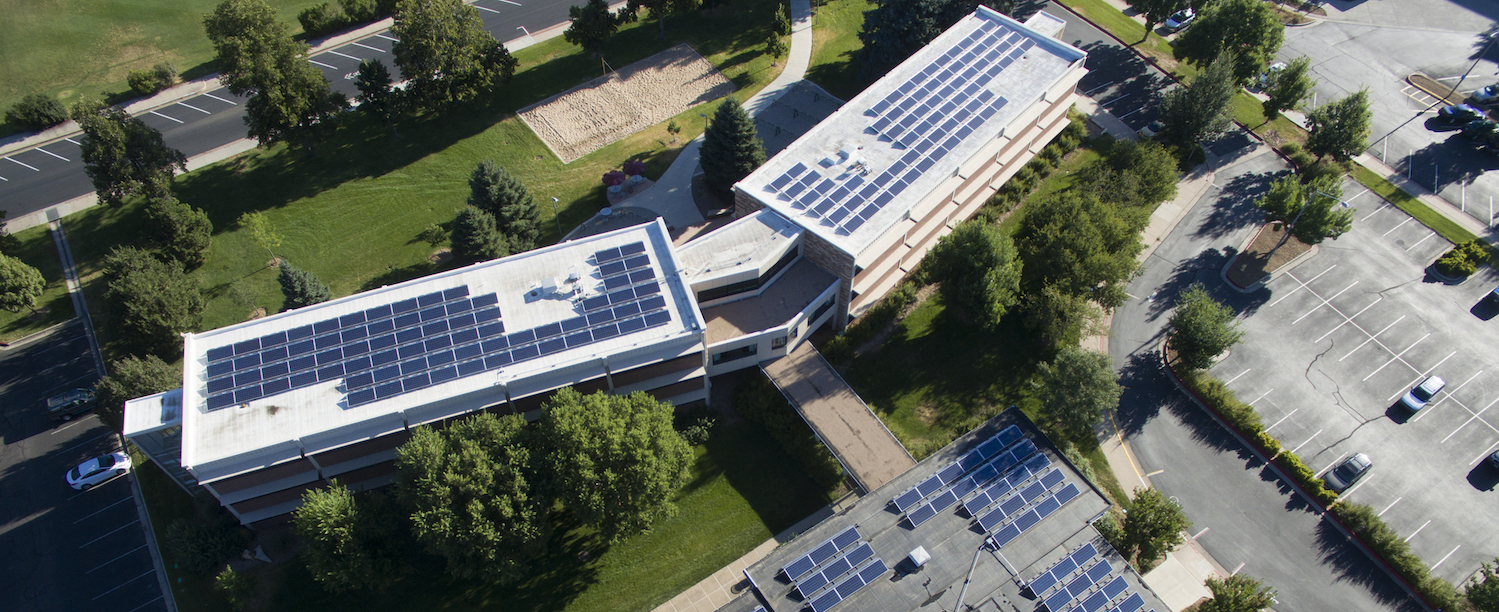Solar panels on top of Edwards Hall
Colorado State University installed its first array of photovoltaic solar panels a decade ago, on the roof of the Engineering Building.
The campus has come a long way since then. That first array generated 18.9 kilowatts of electricity; today the campus has a total of 14 solar arrays that collectively generate 6,754 kilowatts.
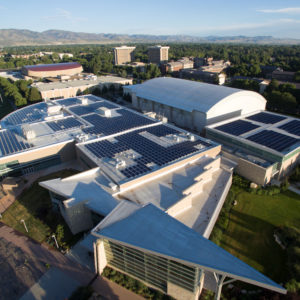
Carol Dollard, energy engineer and co-chair of the President’s Sustainability Commission, says most of that increase actually happened within a couple of years of the Engineering Building installation in June 2009. In December of that year, the first phase of the massive array on the Foothills Campus, Chrisman Field, was installed, followed by Phase 2 a year later. Those 30 acres produce 5,300 kilowatts, about 30 percent of the electricity used at Foothills.
Just the beginning
But CSU is far from done when it comes to solar — and renewable energy sources in general. In January 2017, President Tony Frank signed a pledge to make the campus powered by 100 percent renewable electricity by 2030. That commitment was bolstered last year when the City of Fort Collins and the Platte River Power Authority made the same promise.
Get your solar stickers
Stickers commemorating the 10-year anniversary of CSU’s first solar array will be distributed on the Lory Student Center Plaza from 11:30 a.m. to 1 p.m. on Wednesday, April 24.
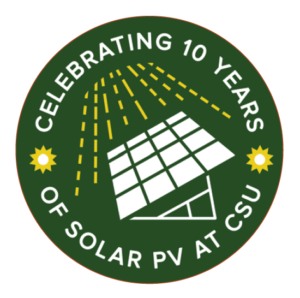
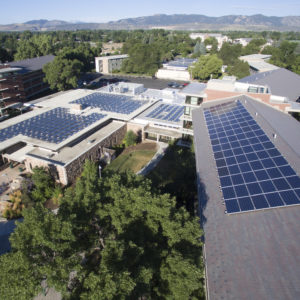
“It helps when the provider of your electricity makes the same commitment,” she says. “So we’re excited to partner with the utility to get to that goal.”
It’s an ambitious objective – and one that isn’t expected to be reached with solar alone. Dollard describes it as a matter of CSU’s total kilowatt hours, or the number of kilowatts needed to power the campus for one hour. Currently, the University requires 170 million kilowatt hours to serve its campuses across the state, and the various solar arrays generate about 10 million kWh. So other types of renewable energy, like wind, will likely be needed to reach the goal, Dollard explains.
But more solar is planned in a variety of locations — even on the roofs of covered bike parking areas.
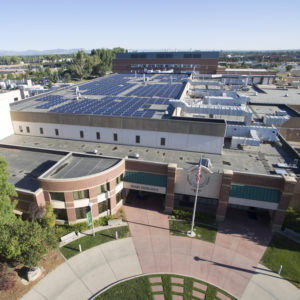
“CSU is continuing to invest in the next solar installations, which could come as soon as next year,” Dollard says.
Early solar research
CSU’s history with solar goes back far more than a decade, of course. Dollard notes that research in areas like solar heating was being done on campus in the 1970s, but the 2009 installation on the Engineering Building was the first grid-connected photovoltaic array of solar panels for the campus. About 25 percent of its cost was covered by a grant from what was then known as the Governor’s Energy Office (it’s now called the Colorado Energy Office). Bill Ritter, director of CSU’s Center for the New Energy Economy, was Colorado’s governor at the time. Ritter will be honored at an April 24 event on campus for his leadership in promoting renewable energy and enabling that first photovoltaic array.
In addition to the Chrisman Field array, highlights of the past 10 years of CSU solar include the installation of a 544-kilowatt array on the roof of the Student Recreation Center in March 2015. It’s the largest array on the main campus, and revenue generated from leasing the roof to the Platte River Power Authority helps reduce the student fees the rec center charges, Dollard says. (CSU has a variety of arrangements for how the arrays were financed and built, who owns them, and how the electricity is used.)
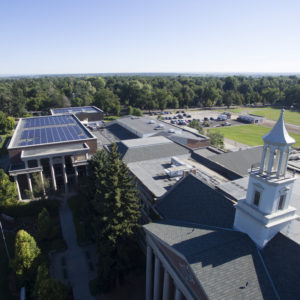
Solar on the UCA
Another highlight was the array installed on the University Center of the Arts in June of that same year. While some questioned whether the panels would be an eyesore on a historic landmark, Dollard says, the array was actually placed on the roof of the Griffin Concert Hall, and is completely hidden behind a parapet.
In addition to the Engineering, Chrisman, Student Recreation Center and UCA installations, arrays have been placed at the Academic Village, Behavioral Science Building, Lake Street Parking Garage, Research Innovation Center, Morgan Library Cube, Powerhouse Energy Campus, Braiden Hall, Parmelee Hall, Veterinary Teaching Hospital and Edwards Hall.
For more information on this and other sustainability initiatives at CSU, visit green.colostate.edu.
